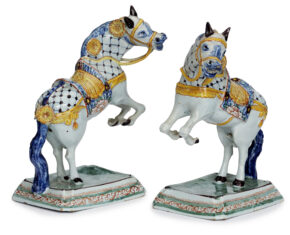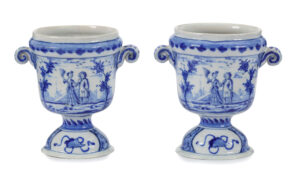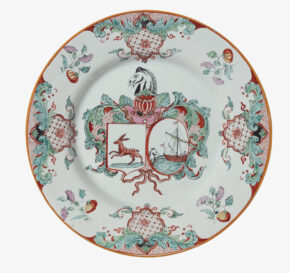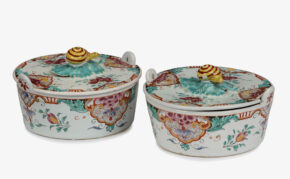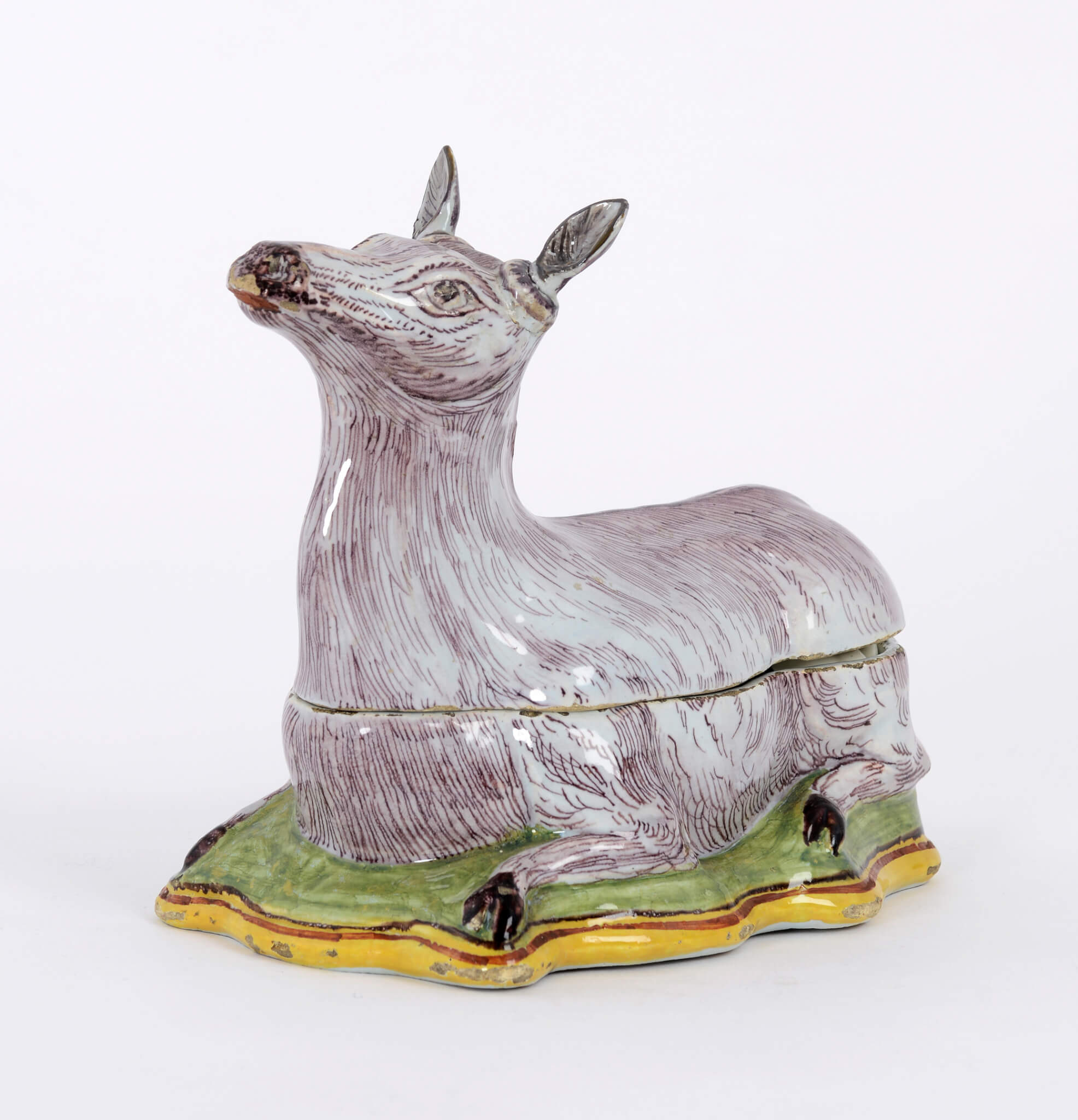
[popup_trigger id=”13756″ tag=”span”]![]() [/popup_trigger]
[/popup_trigger]
Images on this website are licensed under a
Creative Commons Attribution-NoDerivs 3.0 Unported License.
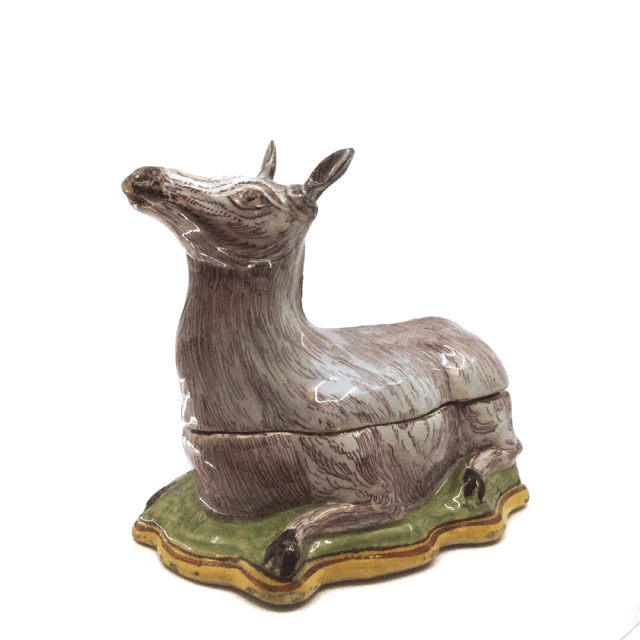
OBJECT
D2150. Polychrome Hind Tureen and Cover
Delft, circa 1770
Marked JvDuijn in manganese on the cover and tureen for Johannes van Duijn, the owner of De Porceleyne Schotel (The Porcelain Dish) factory from 1764 to 1772, or his widow Van Duijn-van Kampen, the owner from 1772 to 1773
The hind’s slightly raised head with pricked ears and an iron-red mouth and tongue, her hide finely delineated in manganese, and modeled at lodge on a pale green conformingly shaped base with a yellow edge outlined in iron-red and manganese.
Height: 14.8 cm. (5.8 in.)
Provenance: Aronson Antiquairs, Amsterdam, 1992; Dutch Private Collection
Note: Zoomorphic tureens most likely evolved from polychrome sugar or wax figures and bird-shaped pastries that decorated the Renaissance table. Before they were modeled in clay, tureens were initially made in silver. Starting in the mid-1730s, Parisian silversmiths were inspired by game and nature for their most extravagant rocaille silver creations. They were produced in numerous faience and porcelain centers around 1750, including Strasbourg and Sceaux in France; Höchst and Meissen in Germany; Chelsea and Longton Hall in England; and most spectacularly in Chinese export porcelain made predominantly for the Iberian market. In some examples, the tureens modeled as animals such as deer and birds, but also fruits and vegetables may have been created as more permanent and palatable replacements for real-life examples, such as the severed head of a wild boar that represented the trophy of a hunt. Deer, among the most common inhabitants of wooded areas throughout Europe, Western and Central Asia and North America, surely were the most popular game during the heyday of hunting, known as the Age of Absolutism. Hunting, as an important element of the officium nobile, the courtly ceremonial, was the passion and privilege of the nobility, and beyond its original function of providing alimentation, it served as entertainment as well as an indicator of status. The tureens were often displayed amongst whole table services, such as the costly zoomorphic dinner services, which were mostly used at special occasions, such as the beginning of the hunting season and were especially popular during the eighteenth century. Not only were models of animals as well as figures and groups of sportsmen greatly fancied for the decoration of tables and interiors, but entire services decorated with hunting motifs were produced for grand dinners celebrating the hunt. At Meissen, Kändler modeled entire hunting parties in porcelain, which also would have be used to adorn the table of a themed dinner, probably after a successful day of hunting, when a roast venison or roast wild boar was the feature of a banquet (see Ulrich Pietsch,“Porzellan und Jagd – Die Leidenschaften der sächsischen Kurfürsten,” in: Porzellan Parforce, 2005, pp. 11-21). In keeping with the hunting theme and in the absence of the beast itself, Delftware tureens in the form of game, such as stags or wild boars, made eye-catching centerpieces on a dining table.


